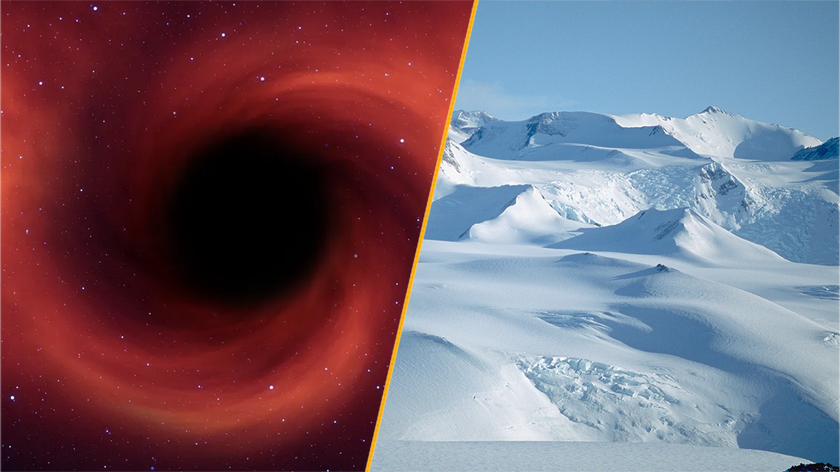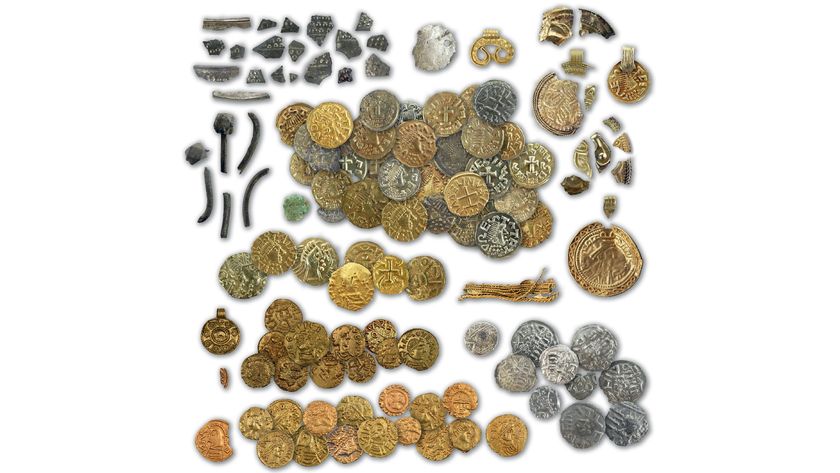Deepwater Horizon: Images of an Impact
Alvin Explores the Gulf
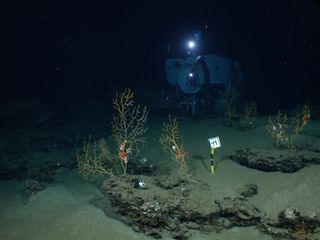
The Deep Submergence Vehicle Alvin is shown working at the coral site found to be impacted by the oil spill from the Macondo well in the Gulf of Mexico. Compelling evidence of the impact of the Deepwater Horizon oil spill on deep-sea corals will be published online in the early edition of the journal Proceedings of the National Academy of Sciences during the week beginning March 26, 2012. The researchers, led by Penn State University Biologist Charles Fisher, used a wide range of underwater vehicles, including the research submarine Alvin, as well as comprehensive chemical-analysis techniques to determine precisely the source of the petroleum hydrocarbons they found on the corals.
Damaged Coral
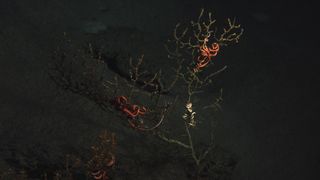
Researchers led by Penn State University Biologist Charles Fisher used a wide range of underwater vehicles, including the research submarine Alvin, as well as comprehensive chemical-analysis techniques to determine precisely the source of the petroleum hydrocarbons they found on the corals. A portion of one of the impacted corals and two attached brittle starfish. Living tissue is orange and most of the skeleton is bare or covered by brown flocculent material. The brittle starfish are normal symbiotic partners of this type of coral. The brittle star on the left shows a more normal coloration for this species and the individual on the right is bleached white and much more tightly wrapped around the branch than normal. Both starfish were uncharacteristically immobile.
Coral Colony
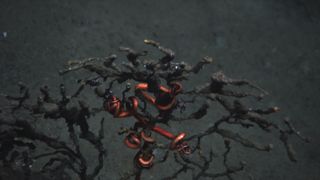
One of the impacted corals with attached brittle starfish. Although the orange tips on some branches of the coral is the color of living tissue, it is unlikely that any living tissue remains on this animal.
Oil Flow
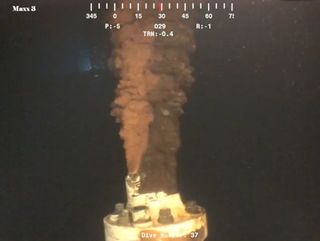
Video feed from the broken riser pipe at the Macando well. The oil flowed for about three months before engineers were able to cap the leak.
Gulf Oil Spill Spread Seen from Above
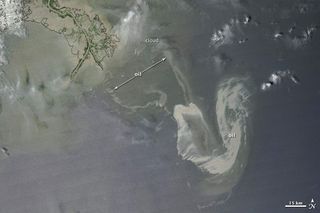
On May 9, 2010, oil continued to flow from a damaged offshore oil well in the Gulf of Mexico. This image from the Moderate Resolution Imaging Spectroradiometer (MODIS) on NASA's Aqua satellite shows the slick on Sunday afternoon.
Gulf Clean-Up
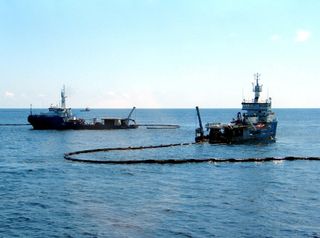
Vessels conduct skimming operations in the Gulf of Mexico near the site of the Deepwater Horizon incident May 16, 2010.
Oil and Dispersant
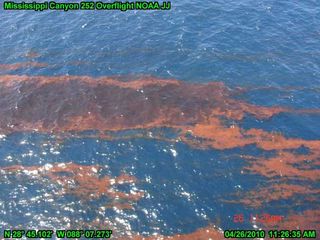
Oil mixed with dispersent floats on the surface of the Gulf during the Deepwater Horizon spill.
Sign up for the Live Science daily newsletter now
Get the world’s most fascinating discoveries delivered straight to your inbox.
Oil Spill Seen Approaching Shore from Space

In this image acquired by ESA's Envisat on April 29, oil from the massive spill in the Gulf of Mexico can be seen as a dark blue swirl advancing toward the Louisiana coast. Envisat acquired this image with its Medium Resolution Imaging Spectrometer (MERIS). Credits: ESA
Gulf Oil Spill Update: Just the Facts
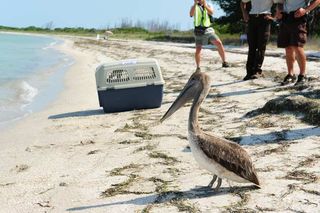
A Brown Pelican prepares to enter the water at the Egmont Key National Wildlife Refuge near St. Petersburg May 23, 2010. The bird was rescued and cleaned by U.S. Fish and Wildlife Service after being found oiled near Louisiana's coast.
Free Bird
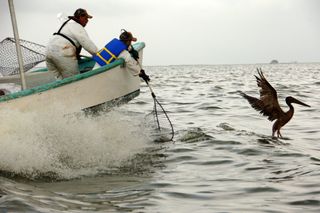
Carl Pellegrin (left) of the Louisiana Department of Wildlife and Fisheries and Tim Kimmel of the U.S. Fish and Wildlife Service prepare to net an oiled pelican in Barataria Bay, La., Saturday, June 5, 2010. The pelican was successfully netted and transported to a facility on Grand Isle, La., for stabilization before being taken to Fort Jackson Oiled Wildlife Rehabilitation Center in Venice, La., for cleaning.
Controlled Burn
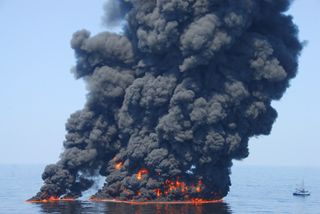
A controlled burn of oil from the Deepwater Horizon/BP oil spill sends towers of fire hundreds of feet into the air over the Gulf of Mexico.

Stephanie Pappas is a contributing writer for Live Science, covering topics ranging from geoscience to archaeology to the human brain and behavior. She was previously a senior writer for Live Science but is now a freelancer based in Denver, Colorado, and regularly contributes to Scientific American and The Monitor, the monthly magazine of the American Psychological Association. Stephanie received a bachelor's degree in psychology from the University of South Carolina and a graduate certificate in science communication from the University of California, Santa Cruz.

